As a physicist, you put heat into a 500 g solid sample at the rate of 10.0kJ/min, while recording its temperature as a function of time. You plot your data and obtain the graph shown in figure.
 .
.
(a) What is the latent heat of fusion for this solid?
(b) What is the specific heat of solid state of the material?
The correct Answer is:A, B, C, D
(a) Between t=1min tot=3min, there is no rise in the temperature of substance. Therefore, solid melts in this time.
L=Qm=HTm=10×20.5
=40kJ/kg
(b) From Q=msΔTors=QmΔT
Specific heat in solid state
s=10×10.5×15=1.33kJ/kg−∘C
Topper's Solved these Questions
- BOOK - DC PANDEYCHAPTER - CALORIMETRY & HEAT TRANSFEREXERCISE - Level 2 More Than One Correct5videos
CALORIMETRY & HEAT TRANSFER
- BOOK - DC PANDEYCHAPTER - BASIC MATHEMATICSEXERCISE - Exercise13videos
BASIC MATHEMATICS
- BOOK - DC PANDEYCHAPTER - CALORIMETRY AND HEAT TRANSFEREXERCISE - Medical entrance s gallery38videos
CALORIMETRY AND HEAT TRANSFER
Similar Questions
The temperature vs time graph for two different gases A and B having same number of moles is as shown in figure. If heat is supplied by same rate to both the gases. Find ratio of specific heat capacity of both gases.
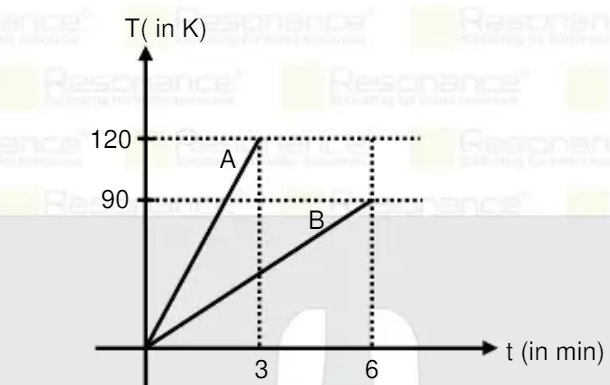 View Solution
View SolutionThe variation of temprature of a material as heat is given to it at a constant rate is shown in the figure. The material is in solid state at the point O. The state of the material at the point P is…..
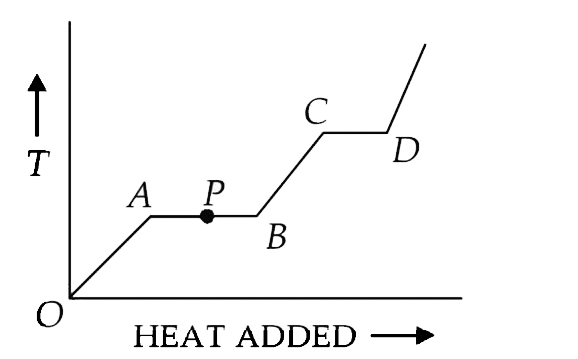 View Solution
View Solution
Knowledge Check
- Question 1 - Select One
Two bodies of equal masses are heated at a uniform rate under identical conditions. The change in temperature in the two cases is shown graphically. The ratio of their specific heats in the solid state is
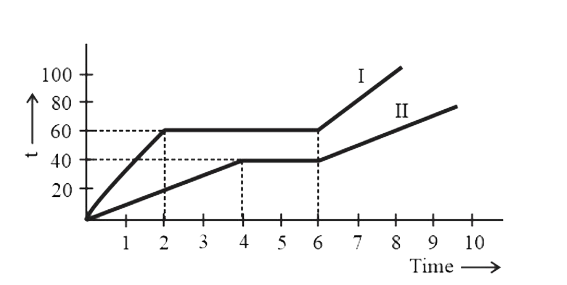 A1:3B1:2C2:1D1:4
A1:3B1:2C2:1D1:4 - Question 2 - Select One
A 2.00 kg metal object requires 5.02×103J of heat to raise its temperature from 20.0∘C to 40.0∘C. What is the specific heat capacity of the metal ?
A63.0J/(kg.∘C)B126J/(kg.∘C)C251J/(kg.∘C)D502J/(kg.∘C) - Question 3 - Select One
The graph shown in the figure represents change in the temperature of 5 kg of a substance as it absorbs heat at a costant rate of 42 kJ min−1. The latent heat of vaporization of the substance is :
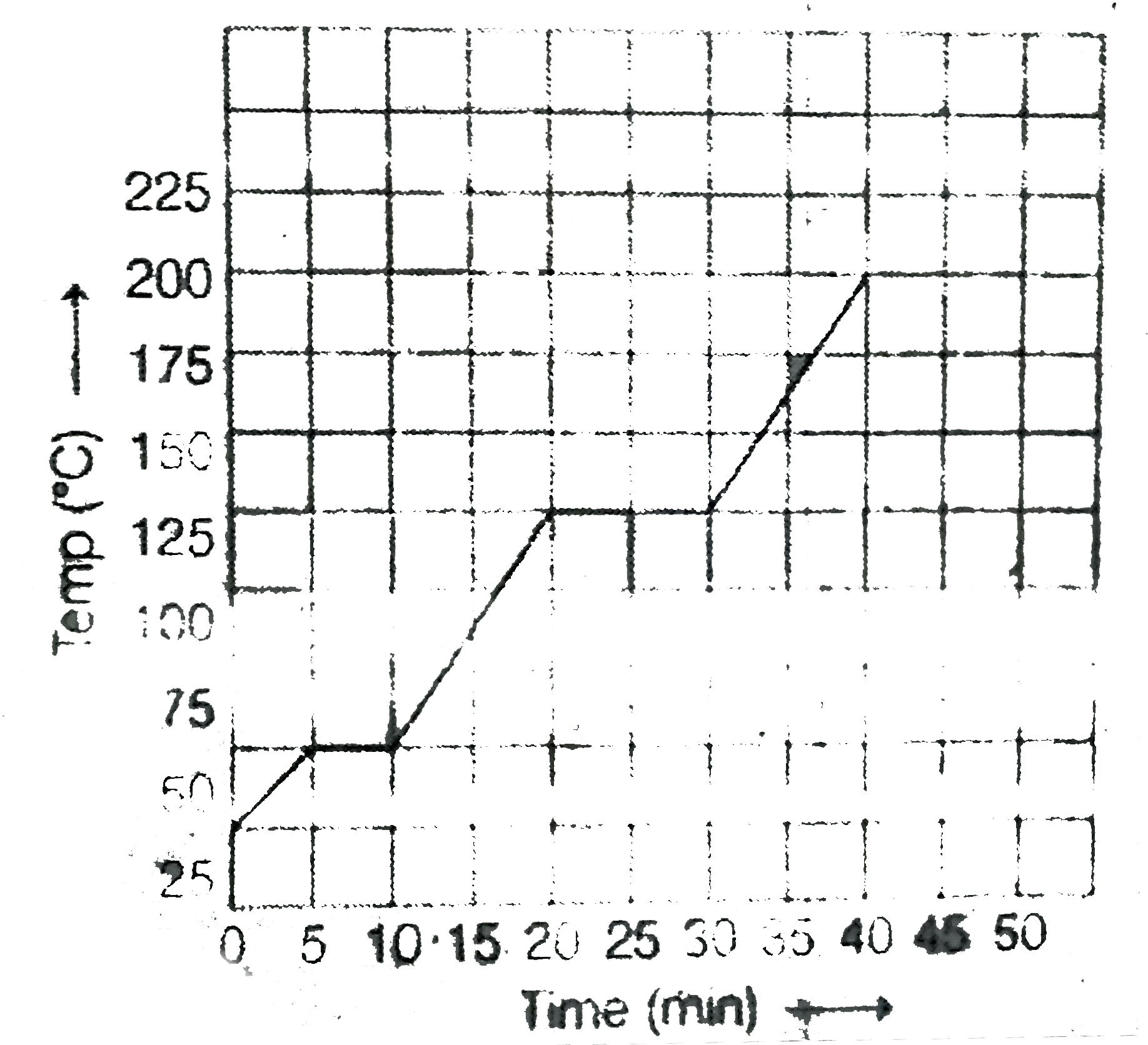 A96kJ kg−1B126kJ kg−1C84kJ kg−1D12.6kJkg−1
A96kJ kg−1B126kJ kg−1C84kJ kg−1D12.6kJkg−1
A heating curve has been plotted for a solid object as shown in the figure. If the mass of the object is 100g, then latent heat of vaporization for the material of the object is [Given, power supplied to the object is constant and equal to 1 kW]
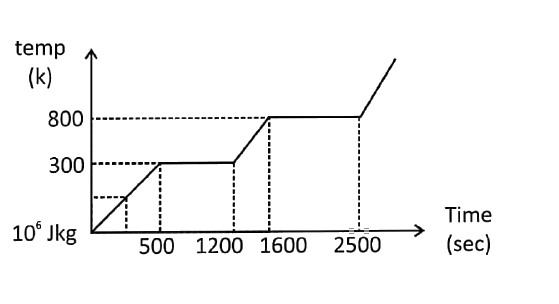 View Solution
View Solution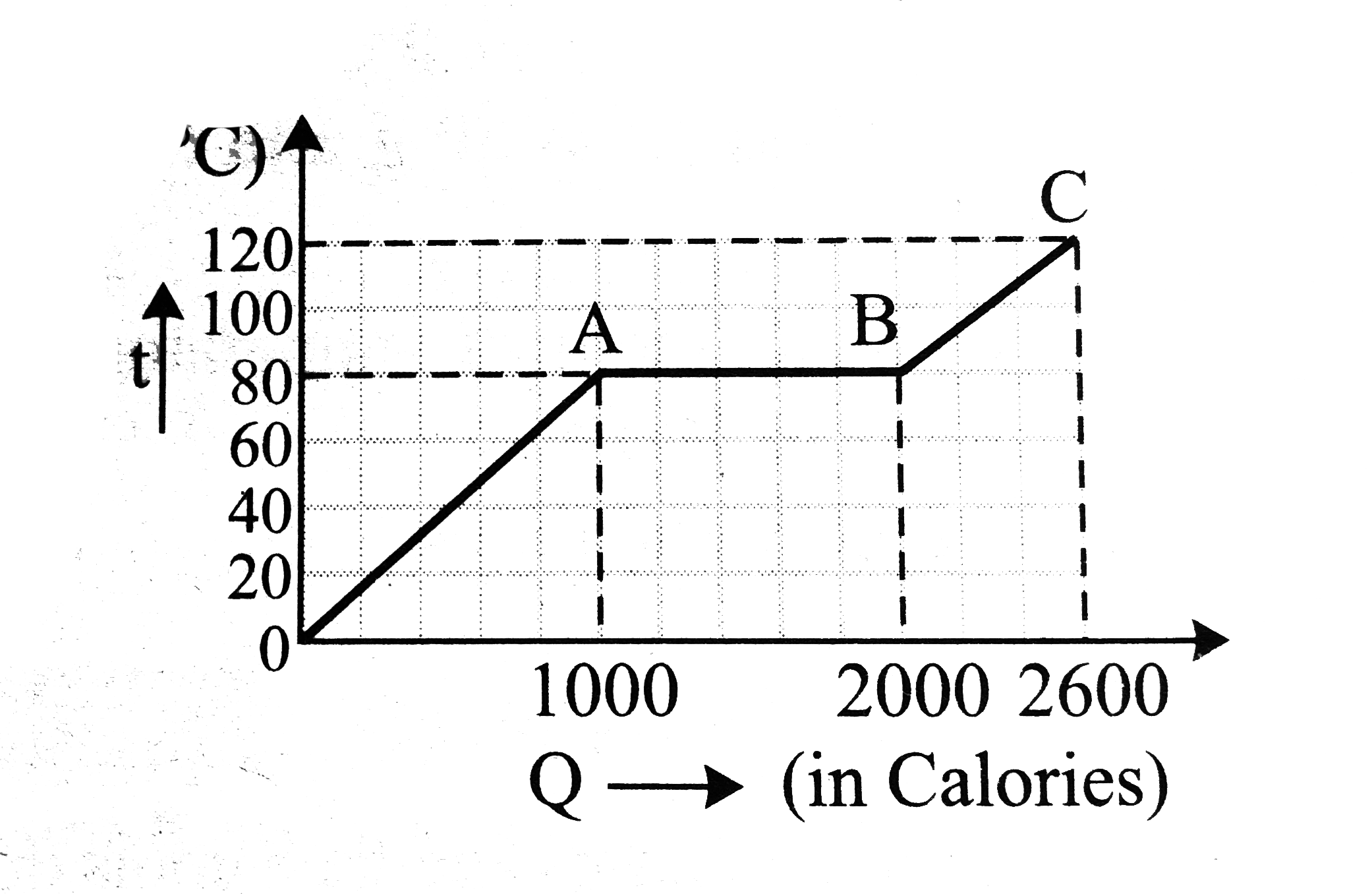
A substance is in the solid form at 0∘C. The amount of heat added to this substance and its temperature are plotted in the following graph. If the relative specific heat capacity of the solid substance is 0.5, find from the graph (i) the mass of the substance, (ii) the specific latent heat of the melting process and (ii) the specific heat of the substance in the liquid state.
Specific heat capacity of water =1000cal/kg/KView SolutionA certain mass of a solid exists at its melting temperature of 20∘C. When a heat Q is added 45 of the material melts. When an additional Q amount of heat is added the material transforms to its liquid state at 50∘C. Find the ratio of specific latent heat of fusion (in J/g) to the specific heat capacity of the liquid (in Jg−1.∘C−1) for the material.
View Solution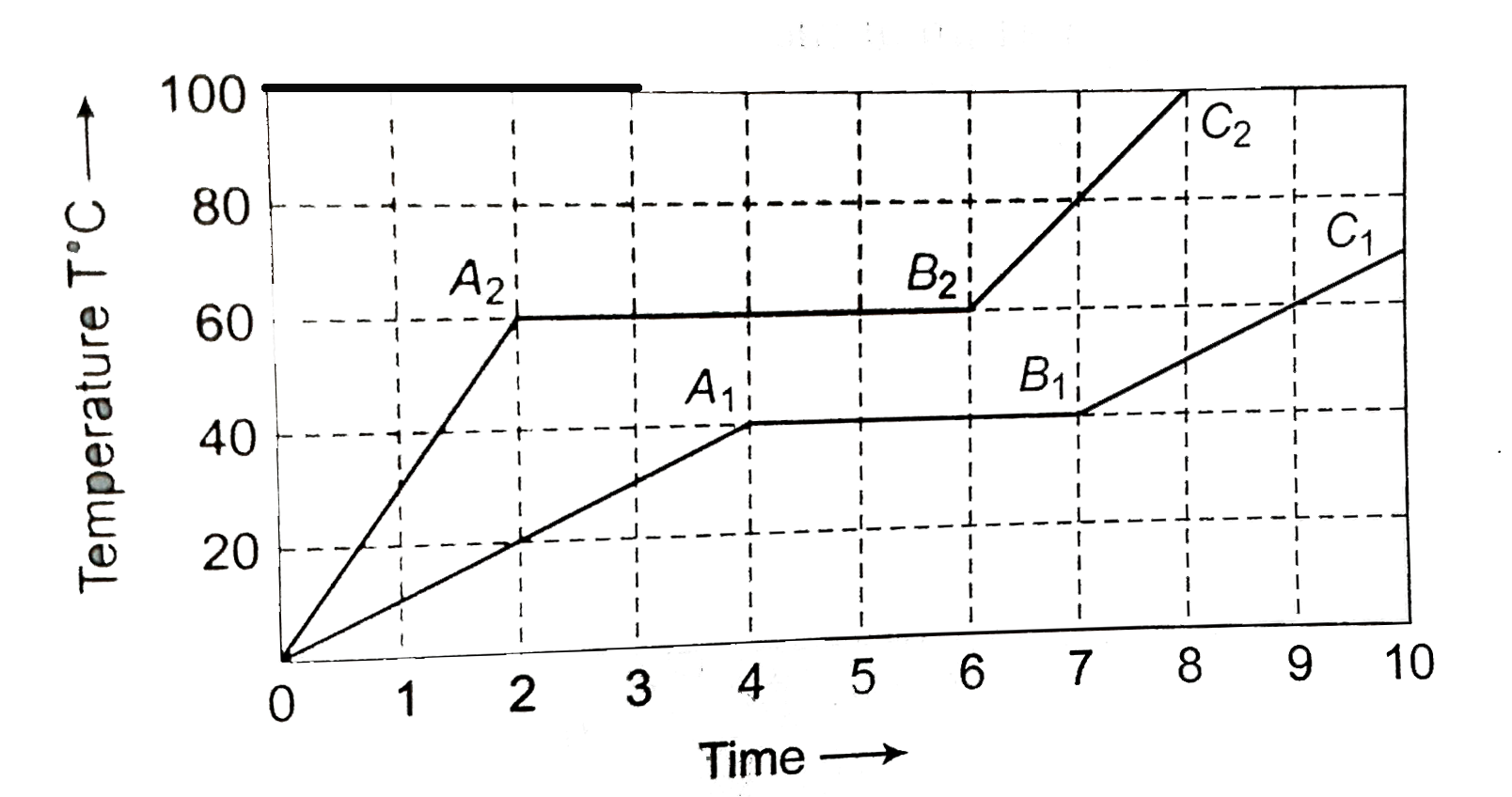
Two bodies of equal mass m are heated at a uniform rate under identical condition. Their change in temperature are shown. Then
(i) The ratio of melting point of the substances is 1.5
(ii) the ratio of their latent heats is 0.75
(iii) the ratio of specific heat of two substances is 0.33 in solid state
(iv) the ratio of specific heat of two substances is 2 in liquid state.View SolutionA solid material is supplied heat at a constant rate. The temperature of material is changing with heat input as shown in the figure. What does the slope of DE represent ?
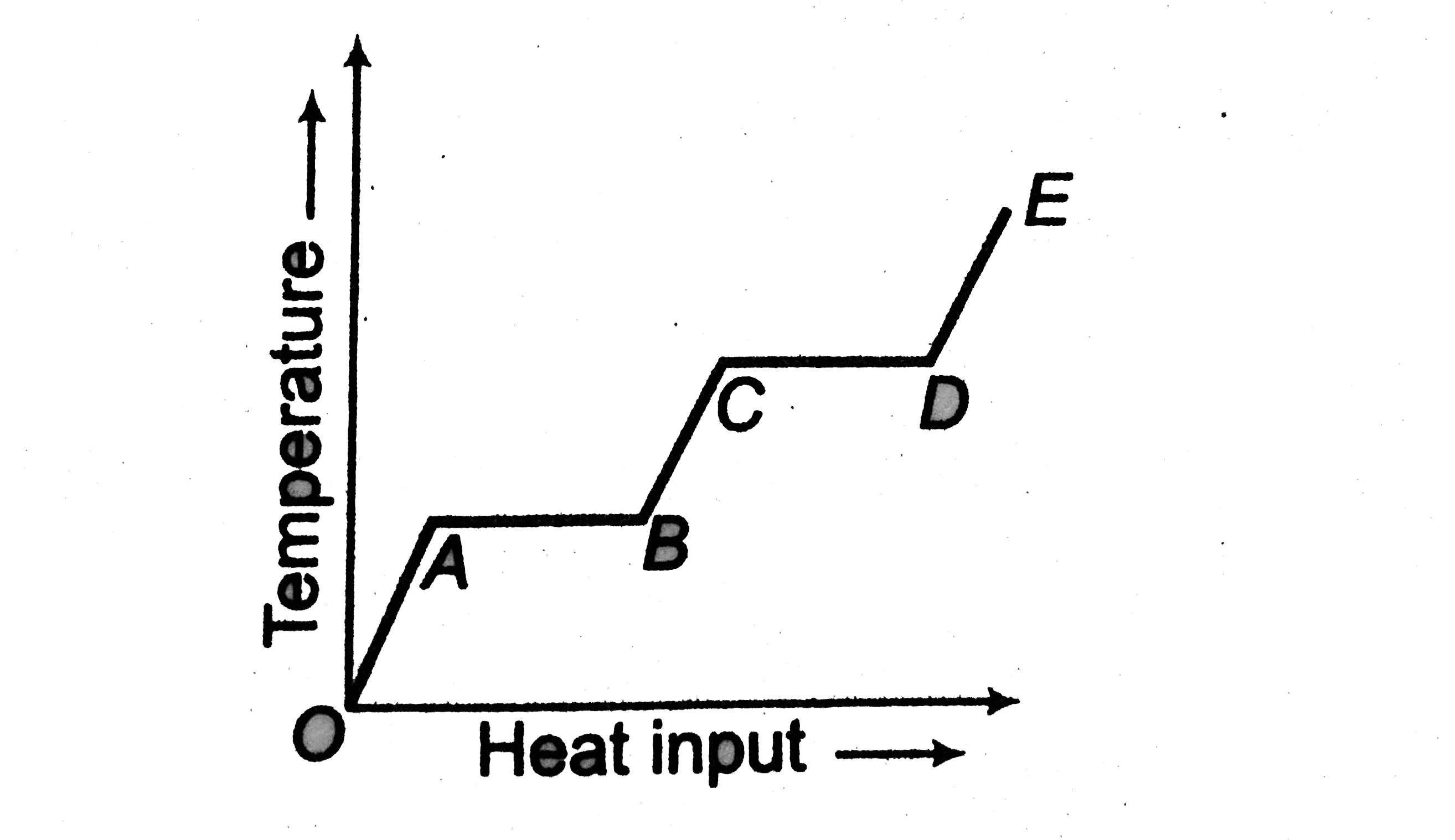 View Solution
View Solution
